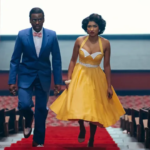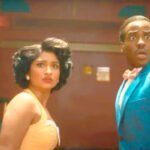The “cosmic hobo” with his Beatles haircut, recorder and 900-year diary facing monsters alongside his Scots companion Jamie McCrimmon and one of three screaming dollybirds? Or the master of manipulation, gently edging his friends and enemies alike into carrying out a particular action or task? Or was the Second Doctor Who simply a Chaplin-esque radical rewrite of the original character, complete with headwear, rickety time machine, a passion for defeating Daleks and on the run from his own people?
If the truth be told, it isn’t an easy question to answer. What is clear from the beginning is this: that Patrick Troughton’s interpretation of television’s most enduring character ensured the show’s future survival. Like the experimental music of the time, the concept of regeneration was radical, inspired and slightly unsettling.
Prior to his second incarnation, the Doctor was just a traveller who happened to turn up and defeat aggressors. But following his 1st regeneration the Doctor was plunged straight into a Dalek plot, and it seemed that Doctor Who would never be the same again:
‘There are some corners of the universe which have bred the most terrible things. Things that act against everything we believe in. They must be fought.’
These words not only summed up the Second Doctor, they address almost his every move from the moment he takes his first breath in the TARDIS, watched by Ben and Polly.
Ben: [Picking up the old Doctor’s ring.] ‘The Doctor always wore this. If you are him it should fit.’ [He tries the ring on the Doctor’s finger, but it is too big.] ‘That settles it.’ Doctor: ‘I’d like to see a butterfly fit into a chrysalis case after it spreads its wings.’ Polly: ‘Then you did change.’ Doctor: ‘Life depends on change, and renewal.’ Ben: ‘Oh, that’s it, you’ve been renewed, have you?’ Doctor: ‘Renewed? Have I? That’s it, I’ve been renewed. It’s part of the TARDIS. Without it I couldn’t survive.’
The impact and importance of this moment cannot be underlined enough. Troughton was a talented character actor and a veteran of 72 movies, and was known to TV audiences across the UK for his wide range of characters in various drama and adventure serials. Not only that but he was one of a select few classically trained actors to be cast by Laurence Olivier in his film “Hamlet” (1948).
The determination of the series’ production team that the show would go one without it’s original leading man are looked at in more detail in the item The Power of Doctor Who. The series as a whole has been criticised for not exploring the Doctor’s character enough over its original run, but is this really warranted? Sure, we know how he might react under certain situations, but does that mean he has had no character development?
During the period 1966-1969, we learned of the existence of the Time Lords and the Doctor’s relationship with them. Up until this point, he was nothing but a nameless traveller in the fourth and fifth dimensions from the fifty whatever century. Throughout his time the Second Doctor would refer also to his family, who he could see:
‘I have to really want to, to bring them back in front of my eyes. The rest of the time they… sleep in my mind and I forget.
This Doctor was able to fool not only his enemies but his friends – including the children at home – with a few well-chosen words, glances and a whisper of “run!” And curiously, he was more like a grandfather than his previous self.
The great tragedy of the Monster Era is of course the lack of remaining footage. Due to a BBC policy of reusing expensive video tape, much of Patrick Troughton’s run as Doctor Who has been lost probably forever. Occasional discoveries such as Tomb of the Cybermen apart, his work exists only in the few existing episodes and the telesnaps, as well as some audio tracks of episodes. This loss has however granted the Second Doctor a massive mystique; he is an enigma.
Not only was this the Monster Era though, it was also the swinging, hip 1960s. The First Doctor was lucky enough to travel with the lovely Vicki, as well as the rather dull Dodo and his own granddaughter Susan, of course. His younger-looking successor however got the chance to spend much more time with the lovely Polly, as well as the gorgeous Victoria and super-cute Zoe. Suddenly, Doctor Who was not only the show with the PVC Cybermen, Ice Warriors and Daleks, it was the show with the PVC companion, the 1960s dollybird and the 19th century babe.
The Second Doctor is perhaps a man of mystery to us, but he is also an enduring character… while the iconic image of the Doctor Who character is of the Fourth Doctor, the second was able to reprise his role three times in three very different stories and lend us that were born after his time an extra layer to the character. Of this I think we are all very thankful that Doctor Who was graced not only by the talents of such a great actor, but also by the character that he gave us.
Discover more from Kasterborous
Subscribe to get the latest posts sent to your email.









